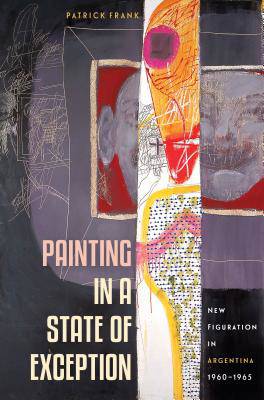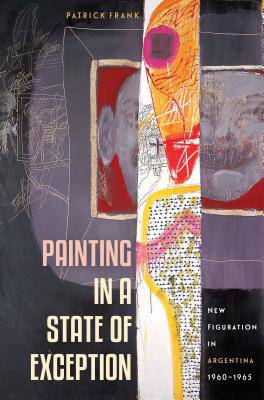
- Retrait gratuit dans votre magasin Club
- 7.000.000 titres dans notre catalogue
- Payer en toute sécurité
- Toujours un magasin près de chez vous
- Retrait gratuit dans votre magasin Club
- 7.000.0000 titres dans notre catalogue
- Payer en toute sécurité
- Toujours un magasin près de chez vous
Painting in a State of Exception
New Figuration in Argentina, 1960-1965
Patrick FrankDescription
Although it is one of Latin America's most significant postwar art movements, Nueva Figuración has long been overlooked in studies of modern art. In this first comprehensive examination of the movement, Patrick Frank explores the work of four artists at its heart--Jorge de la Vega, Luis Felipe Noé, Rómulo Macció, and Ernesto Deira--to demonstrate the importance of their work in the transnational development of modern art.
The artists were responding directly to a difficult and chaotic period characterized by civil strife, frequent changes of government, and economic shocks. They broke new ground in Latin American art, not only in their technique, but also in the way they engaged the social, political, and cultural climate in an Argentina still recovering from the Perón years. Building on postwar expressionism by working with unprecedented urgency and abandon, they combined spontaneous techniques of abstraction with collage elements and figural subjects. Their works exercised a creative freedom that broke taboos about the role of the artist in society. Frank combines analyses of each artist's paintings with discussions of their social, political, and artistic contexts. He reveals the works' connections to literature, popular culture, and film, broadening our understanding of modern art in the early 1960s.
Spécifications
Parties prenantes
- Auteur(s) :
- Editeur:
Contenu
- Nombre de pages :
- 256
- Langue:
- Anglais
Caractéristiques
- EAN:
- 9780813062495
- Date de parution :
- 15-05-18
- Format:
- Livre broché
- Format numérique:
- Trade paperback (VS)
- Dimensions :
- 155 mm x 234 mm
- Poids :
- 385 g

Les avis
Nous publions uniquement les avis qui respectent les conditions requises. Consultez nos conditions pour les avis.






